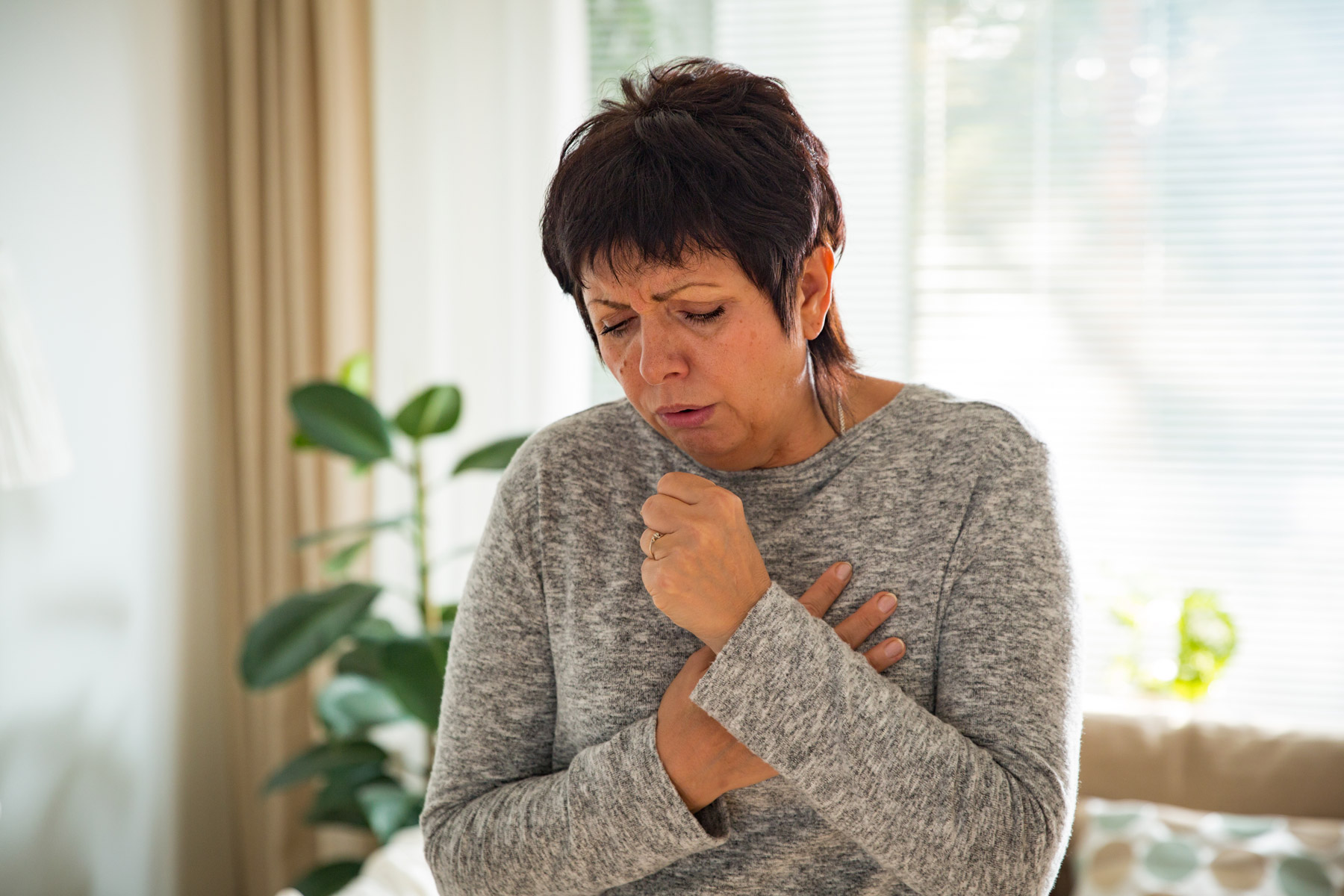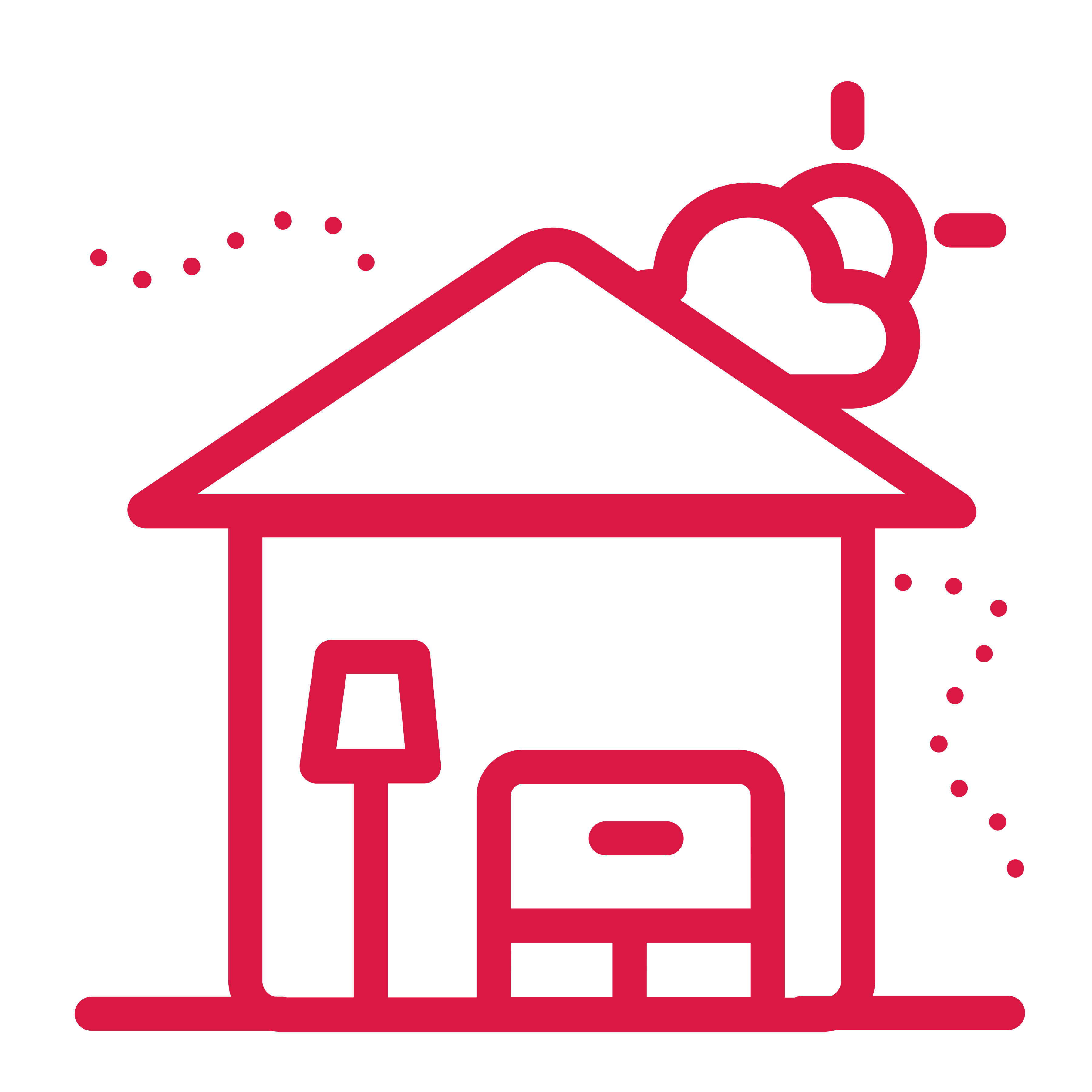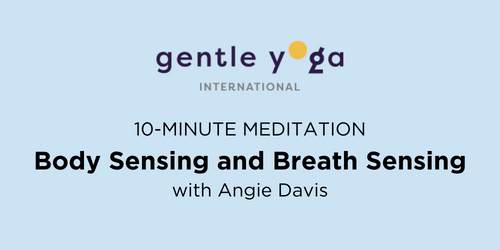Module 2
Symptom Self-Management
Recognizing your symptoms when you feel well will help you to make decisions when you have a flare-up (exacerbation) of your symptoms.

OVERVIEW
By the end of this module, you will have met the following goals:
Goal 1: Learn about common respiratory symptoms
Goal 2: Learn the skills to manage your symptoms and recognize when you should call your healthcare provider
Goal 3: Exercise with us 3 times this week and continue your home walking program
Goal 4: Take action to build your healthcare team, download your disease Action Plan and discuss it with your care team, caregiver and family
General information
Your body is constantly trying to maintain what it considers "normal".
The physical symptoms that you feel, such as shortness of breath, cough, mucus production and fatigue, are normal to everybody. They are your body’s way of trying to create balance. For healthy people, symptoms correct themselves when they are addressed.
With chronic lung disease, your body is trying to regulate what it considers "abnormal" living conditions. Shortness of breath, cough, mucus production and fatigue can become a burden on your ability to perform activities of daily living. Recognizing how these symptoms affect you on a daily basis will help you to recognize flare-ups that can lead to exacerbations (increased severity of symptoms often needing medical attention).
In this program we will refer to pursed-lip breathing, diaphragmatic breathing, huff coughing and recovery breathing (see video below). These breathing techniques help you to manage your symptoms. Watch the video below to learn more. Practice these techniques when you are feeling well, so that you can use them more easily when symptoms affect your daily living. Using different breathing techniques before, during and after exercise helps relieve some respiratory symptoms.
Shortness of breath (dyspnea)
Daily symptom check. Is my shortness of breath normal for me? Am I more short of breath than usual? Has it been increasing over the last 2 days? Has my healthcare provider given me options for helping myself or do I need to call my healthcare provider?
Dyspnea is stressful! Why am I short of breath and what can I do?
Your dyspnea (shortness of breath) might come from difficulty exhaling if you have an obstructive lung disease. Pace yourself, try pursed-lip breathing while performing activities. If necessary, take a break, relax and do some pursed-lip breathing or diaphragmatic breathing to help get rid of trapped air in your lungs.
Your dyspnea might come from difficulty inhaling if you have a restrictive lung disease.
Pace yourself, take a break, relax. Pursed-lip breathing or diaphragmatic breathing may help. If you use home oxygen, make sure that your oxygen flow is set correctly, that the connections are tight and that your tubing is intact.
Your dyspnea might come from using muscles that you don't use very often. Pace yourself. Use pursed-lip breathing during activity and use recovery breathing to create more space for breathing. Continue to build on your strength and endurance throughout this virtual pulmonary rehabilitation program or supervised pulmonary rehabilitation programs. Evidence shows that gradually increasing the amount you exercise will make you feel less short of breath with exertion.
Your dyspnea might come from tightness in your chest. Take a break and try pursed-lip, diaphragmatic or recovery breathing. Use your reliever inhaler to relax the muscles in and around your airways. If you are using your reliever inhaler several times a day or week, talk to your healthcare provider about your symptoms and the options available to better control your symptoms.
Your dyspnea might come from poor oxygen and carbon dioxide exchange, which gives you a low blood oxygen level. If you are on home oxygen therapy, take a break, try pursed-lip or diaphragmatic breathing and check your oxygen saturation level. Make sure that your oxygen source is on and set correctly for your activity level. When was the last time you did a walk-test for your healthcare provider?
Your dyspnea might be worse if you are anemic, have cardiovascular disease or suffer from anxiety.
Cough
Daily symptom check. Is my cough normal for me? Am I coughing more than usual? Has this been going on for more than 2 days? Has my healthcare provider given me options for helping myself or do I need to call my healthcare provider?
Why am I coughing? What can I do?
Coughing is a normal part of your body’s protective mechanism whether lung disease is present or not. Understanding your cough helps you to know if you need to take action.
- A cough protects the lung from allergens like dust, pollen and perfumes, as well as irritants like smoke or cold temperatures.
- A cough naturally moves mucus up and out of our lungs.
- A cough can be a result of acid reflux or postnasal drip. Your healthcare provider can evaluate for any sinus disease and acid reflux.
- A cough can be caused by a food sensitivity or a reaction to a medication.
Coughing may be a symptom of lung illness and disease
- Acute (short-term) cough can be a sign of a cold, flu, pneumonia or COVID-19
- A chronic (long-term) cough can be a sign of an obstructive or restrictive lung disease
Chronic cough
A cough that lasts more than 8 weeks is not unusual for people with pulmonary fibrosis or COPD. It can affect your ability to exercise, have conversations and sleep. If you think you may have chronic cough, talk to your healthcare provider. To learn more about chronic cough, visit our chronic cough resources.

-
- Obstructive lung disease: excessive mucus in the lungs leads to increased coughing. At times the mechanism that moves mucus up and out of the lungs does not work efficiently because of cell damage or muscle weakness.
- Restrictive lung disease: heightened cough reflex is due to the lung’s production of a substance that increases cough. Although usually dry, mucus can accumulate with acute illness. This happens as a result of fibrosis or stiffness that limits the ability to take a deep breath and produce an effective cough.
How to manage your dry cough
- You can try to control your cough by breathing in through your nose, and out through pursed lips. Doing this will filter, warm and moisten air going into your lungs. It also adds a little pressure as you exhale to keep your airways open a little longer and prevent them from rubbing against each other, which can also trigger the cough response.
- Use a room humidifier
- Sip warm water
- Suck on sugar-free lozenges
- Talk to your healthcare provider about the right cough medication
How to manage your wet or productive cough
- Huff coughing
- Use a room humidifier
- Talk with your healthcare provider about the right cough medication
Managing the mucus of a productive cough will be discussed in the next education section.
People with chronic lung disease should try to limit or avoid exposure to possible triggers with outdoor and indoor activities.

Avoid triggers: Outdoors
- During outdoor activities, minimize smoke fumes, dust and chemical exposure
- Consider air quality and weather conditions before engaging in outdoor activities, as wind and cold air can trigger a cough
- Consider wearing a mask while gardening, woodworking or painting to limit exposure to triggers
- If working in an outdoor shop, make sure it is well ventilated
Avoid triggers: Indoors
Try to keep the indoor environment as lung friendly as possible. Indoor pollution and exposure to triggers can cause coughing and worsen shortness of breath. Triggers include:
- Cleaning products, disinfectants with strong odours and fragrances
- Natural oil fragrances, incenses, scented candles
- Paint, air freshener spray, hair spray and perfumes
- Indoor smoke from smoking or second-hand smoke, wood stoves, wood/coal heat furnaces
- Pets (cats, dogs, birds)
- Down comforters
- Dust and dust mites from carpet and mattresses
- Molds and fungi around water leaks and damp areas
FUN FACT: Quitting smoking will help to reduce your cough.
An ounce of prevention is worth a pound of cure. Stay current with flu, pneumonia, pertussis, and COVID vaccinations. Talk to your healthcare provider about all vaccines including RSV to make sure these are safe for you.
Mucus
Daily symptom check. Is the mucus in my lungs normal to me? Is it the same amount, colour, consistency and smell? Has it been changing in the last 2 days, or have I developed a fever? Has my healthcare provider given me options for helping myself or do I need to call my healthcare provider?
Why do I have mucus secretions? What can I do?
The mucus that your body produces acts as a lubricant in your lungs, throat, nasal passages and other areas. It keeps the body’s delicate tissue from drying out. Mucus also helps to defend against germs by trapping them and get rid of them.
When you live with chronic lung disease, it can become challenging to clear mucus from your lungs. Weakened respiratory muscle and changes to airways and lung tissue leave you at greater risk of infection when mucus can not be cleared from the lungs.
Different lung diseases have different reasons for the accumulation of mucus.
Obstructive lung diseases
When you have an obstructive lung disease, the tiny hairlike projections lining your airways (called cilia) have become damaged because of smoking or repeated respiratory infection. Cilia are used to move mucus in the lungs.
- COPD: Mucus gets trapped behind damaged airways or in damaged alveoli
- Bronchiectasis: Airways become restructured and less effective at moving mucus
- Cystic fibrosis: Genetic changes cause mucus to be thick and sticky
- Asthma: Mucus production is an inflammatory response to allergens and triggers
Restrictive lung diseases
If you have pulmonary fibrosis or another interstitial lung disease, you usually have a dry, hacking cough that does not produce much mucus. When people with a restrictive lung disease have a condition that leads to mucus production, like a cold virus or pneumonia, the lung stiffness makes it difficult to take a deep breath for an effective cough.
How to manage your mucus
Huff coughing (in breathing techniques video) helps to conserve energy when you need to clear mucus.
Gravity can make it easier for you to clear your airways. Airways in your lungs branch off in different directions. Changing your position when you cough can sometimes help clear areas of your lungs that don’t drain well when you are sitting. Try laying on your stomach or sides with two pillows propped under your hips for a few deep breaths before a cough. Try leaning forward over a chair or large ball for a few deep breaths and a cough. Slowly and carefully come back to a sitting position.
Oscillating positive expiratory pressure (PEP) devices are small hand-held tools that create a vibration in your lungs when you exhale through the device. This loosens the mucus in your lungs, making it easier and more effective to cough mucus up and out.
Vest therapy involves wearing a vest that is mechanically powered to create vibration and oscillation, loosening persistent mucus from the lungs. Talk to your healthcare provider to see if vest therapy is right for you.
Mucolytic medications help by breaking down the chemical structure of mucus, making it less thick and sticky and therefore easier to cough up and out.
Fun Fact: Drinking water, which is calorie-free, caffeine-free, inexpensive and readily available, is the easiest way to keep mucus thin, making it easier to cough up. Note: if you have a condition that limits your water intake, follow your provider’s recommendations.
The importance of being active
Being active and moving your body whether you have COPD, bronchiectasis or another chronic lung condition is a great way to loosen mucus and make it easier to cough up. We talk a lot about the importance of exercise and how it helps you build strength, but exercise and activity play a key role in keeping your airways clear.
Fatigue
Daily symptom check. Do I feel unusually tired? Do I feel tired when I wake up in the morning? If the answer is yes, talk with your healthcare provider about it. Fatigue lasting at least 6 months is considered chronic. Fatigue worsens with physical or mental activity, and does not improve with rest.
Why do I tire so easily? What can I do?
Fatigue, unlike the temporary feeling of tiredness, is a daily lack of energy. It is an unusual or excessive whole-body tiredness not relieved by sleep. It is one of the most common symptoms of COPD, and one of the most burdensome symptoms associated with interstitial lung disease. Fatigue can impact your ability to work or to socialize, and affects your quality of life. Exercising will help, but will not resolve fatigue.
How to manage fatigue and conserve energy
- Balance activities and rest periods. Pace your day, engaging in activities that require more energy when you have the most stamina. Spread your activities out throughout the week. If Sunday is a quiet day for you, plan grocery shopping on Monday morning when you feel better rested. Shop when it is less busy and organize your list by aisle to save steps.
- Simplify your tasks. Let your dishes soak so that there is less scrubbing, and allow dishes to air dry.
- Prepare meals sitting down. Plan ahead to have items close by. Double a recipe and freeze half for another day.
- Make the bathroom more friendly with an elevated toilet or a grab bar to help you stand. Use a shower chair.
- Lay out your toiletries and keep a stool handy for when you shave or brush your teeth.
- Slide or drag objects rather than lifting them.
- Take a break when you feel tired. Use one of the breathing techniques included in this program.
- Maintain good sleeping habits. Limit caffeine several hours before bed. Sleep in a cool and dark environment. Establish a sleep routine that includes unwinding, relaxing and deep breathing. Try going to sleep and waking up around the same time every day. Limit blue light from hand-held electronic devices and computers for 1 to 2 hours before bed.
Not-so-fun Fact: Low oxygen levels at night can affect how we feel during the day. This can be a result of shallow breathing, which is different than sleep apnea. If you wake up feeling tired, talk with your healthcare provider.
EXERCISE
Your steps to success
- If you have a pulse oximeter, check your oxygen saturation and heart rate. If they are normal for you, plan to exercise with us.
- Have you assessed your symptoms? Are there changes in your cough, mucus production, shortness of breath or general fatigue?
- Have you taken your long-acting, controller inhalers this morning? Pursed-lip breathing while exercising helps reduce shortness of breath associated to exertion, but some should use a quick-acting, reliever medication 15-20 minutes before exercise.
- Have you set your oxygen liter flow to the rate prescribed for exercise?
- Have you eaten foods that provide your body with energy?
- If you still smoke, consider tracking your nicotine usage with a smoking/nicotine diary.
We are happy that you have come back to exercise with us!
Remember, don’t be too hard on yourself. You’ve done well so far, just keep moving forward.
Gradually increase how long you walk, cycle or swim. Below is a guide to help you increase your walking time.
Home walking program
Week 1
5 minutes, 5 times per day
Weeks 2 and 3
10 minutes, 3 times per day
Weeks 4 and 5
15 minutes, 2 times per day
Week 6
20 minutes, 1 time per day
Week 7
25 minutes, 1 time per day
Week 8
30 minutes, 1 time per day
Relaxation, Meditation and Better Breathing
Reinforcing relaxation and diaphragmatic breathing.

Youtube supports many free Mindful Meditation and Better Breathing videos to promote effective breathing techniques, as well as mood, motivation, relaxation, stability, clarity and sleep enhancement. The Canadian Lung Association does not endorse the use of any particular or specific website or channel for meditation and relaxation. Sites listed are suggestions only.
TAKE ACTION
Gaining confidence in managing your symptoms will help you to maintain your health and regain quality of life. Set a goal to check in (assess) on your symptoms daily. Practice the techniques that you learned in this module and use them regularly.
Talk with your healthcare team about your symptoms.
Who might be part of your healthcare team
- Your primary care provider (family doctor or nurse practitioner) or respirologist
- Your nurse
- Your pharmacist
- Your respiratory therapist
- A Canadian Lung Association Certified Respiratory Educator, available through the Helpline at 1-866-717-2673.
Points that you might want to discuss with your healthcare team
- What to do when your symptoms increase
- When to call the provider
- Activities that you find difficult
- Use of controller and reliever medications
- Developing an Action Plan for your disease
My goal
Set a goal to assess your symptoms regularly.
I feel confident that I can check on my symptoms ( #times/day).
My Action Plan
Follow the links below to access the complete version of the action plans. Fill out the right one for you based on your disease and discuss it with the members of your care team.
My PULMONARY FIBROSIS Action Plan
Breathe Better with the Respiratory Care Program
Sun Life and Online Pharmacy, provided by Pillway**, have partnered to offer you and your dependents the Respiratory Care Program. You'll receive 1-on-1 support to help you get back to doing the things you love while breathing easier. The program is available for people living with asthma and chronic obstructive pulmonary disease (COPD), and at no cost.
Read more about the Respiratory Care Program and our collaboration with Sun Life.
Program not available in Quebec
Make life more convenient with Online Pharmacy
Online Pharmacy, provided by Pillway*, is an online pharmacy that makes life more convenient by changing the way you get your medications. Offering fast and free delivery, pharmacist support and medication management.
Read more about Lumino Health Pharmacy and our collaboration with Sun Life.
*SHG Pharmacy Inc. and SHG West Pharmacy Inc., doing business as Pillway pharmacies, are partially owned by Simpill Health Group Inc. For your information, and as a point of disclosure, Sun Life Assurance Company of Canada has partial ownership in Simpill Health Group Inc.
Programs not available in Quebec
FEEDBACK
Tell us what you think
Modules
Introduction · Module 1 · Module 2 · Module 3 · Module 4
Module 5 · Module 6 · Module 7 · Module 8 · Conclusion

Speak to a certified respiratory educator
Call our Health Information Line at 1-866-717-2673 to speak to a certified respiratory educator. You can also email info@lung.ca.
BreatheSTRONG Program: Medical Disclaimer
Before you begin the BreatheSTRONG program, please read and agree to the medical disclaimer.
Medical Advice Disclaimer, Disclaimer of Warranty and Limitation of Liability
Please read this document carefully. The Canadian Lung Association (CLA) strongly recommends that you consult your physician or other qualified healthcare provider before choosing to take part in BreatheSTRONG. You acknowledge that CLA offers no medical assessment, diagnosis, or treatment, and that CLA makes no determination as to whether or not you are physically fit to participate in this program. This program is intended for Canadians living with chronic lung disease, be it obstructive or restrictive in nature. This program is not supervised and therefore not intended for Canadians who are awaiting lung transplant, lung volume reduction surgery or those who have pulmonary hypertension. Certain pre-existing non-respiratory conditions may also exclude you from participating in the exercise portion of this program.
THERE ARE POTENTIAL RISKS INHERENT in your participation in BreatheSTRONG, including, without limitation, worsening of your existing symptoms, an increased load on the heart, episodes of light headedness, fainting, dizziness, pain, chest discomfort, shortness of breath and bone and muscular injury. If you experience faintness, dizziness, pain, or unmanageable shortness of breath at any time while participating in exercise program, you should stop immediately.
CLA and BreatheSTRONG cannot respond to medical emergencies. If you think you have a medical emergency, call 911 immediately.
CLA assumes no liability or responsibility for the use of any information provided by BreatheSTRONG, or for your reliance on this information in place of specific medical advice from a qualified healthcare provider. As is, the health information content provided in this program is current, reviewed and approved by qualified healthcare professionals. To the maximum extent permitted by applicable law, CLA disclaims all liability for any errors or other inaccuracies in the information provided. In no event shall CLA be liable for damages of any kind, including but not limited to direct, indirect, special, consequential, or other monetary damages in connection with your use of or reliance upon information provided by BreatheSTRONG.
By following this program, you acknowledge that you have read, understand and agree to abide by the above Medical Advice Disclaimer, and Disclaimer of Warranty and Limitation of Liability.

